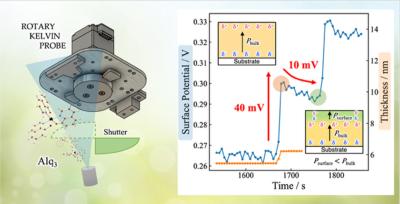Researchers use intermittent vacuum deposition to increase OLED device performance
Researchers from Japan's Chiba University developed a new method to deposit thin OLED layers that achieves controllable molecular arrangement - that can be used to increase the efficiency and lifetime of OLED devices.
The method, called intermittent deposition, uses pauses in deposition and changes in deposition conditions to invert the orientation of the organic molecules, thus achieving high control over the resulting films. The researchers built on a tool called Rotary Kelvin Probe (RKP) that is used to measure the surface potential during and after the deposition in real-time. The new approach of intermittent deposition created a relaxed and stable surface layer with controllable polarization.











